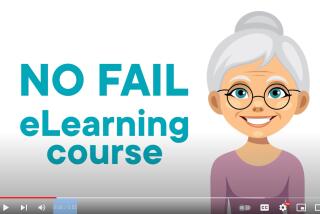‘Smoke a Joint, Lose License’ Law in Effect : Crime: Drug offenders face six-month suspension of driver’s rights for any conviction, even if unrelated to driving. The measure is expected to affect 131,000 people in the next 12 months.
- Share via
SACRAMENTO — Since the 1970s, California’s scales of justice have equated the severity of possessing less than an ounce of marijuana to running a red light. All that changes starting today.
As of 12:01 a.m., offenders face a six-month suspension of their driver’s license for any drug conviction, including marijuana and all other illicit drugs.
The tough state law enacted this year--dubbed the “smoke a joint, lose your license” law--is expected to snare the licenses of 131,000 drivers during the next 12 months, whether or not their offenses were related to operation of a motor vehicle.
It applies to state and federal drug crimes, ranging from felonies punishable by long prison sentences to the so-called decriminalized misdemeanor possession of less than an ounce of marijuana, which up to now has been punishable by a citation and $100 fine, less than the fine for many traffic violations.
“It’s going to complicate prosecution of minor crimes,” said Dale Gieringer, California coordinator of a national group that advocates decriminalizing simple marijuana offenses. “People are going to be contesting charges in court because the loss of your license is more of a concern than a fine of $100.”
The new law, Gieringer asserted, is an attempt to bypass legislation enacted in the 1970s that made possession or cultivation of less than an ounce of marijuana for personal use subject to the $100 fine and citation.
But officials from the Wilson Administration, which pushed for the law, say a 1993 Department of Motor Vehicles study shows that those arrested on drug offenses are prone to more traffic accidents and violations regardless of whether their arrest was connected to driving.
California becomes the 19th state to comply with an extraordinary federal law that requires states to enact the driver’s license statute or formally declare their opposition to such a law--as 31 states have. States that remain silent on the issue risk losing federal highway funds.
For California, the cost of not taking action would have resulted in the cutoff of 5%, or about $54 million, of its federal road construction and maintenance money during the next year.
The compliance bill, carried for Gov. Pete Wilson by Assemblyman Robert Frazee (R-Carlsbad), was passed on the last day of the legislative session, Aug. 31--one month before the federal deadline--and signed by Wilson. He called it an appropriate response to illegal drug use, “regardless of whether or not the individual was operating a motor vehicle.”
Unlike most statutes that become permanent, the new law will automatically expire next Dec. 1, unless it is renewed by the 1995 Legislature, as expected.
Judges in California long have had the power to suspend or revoke the driver’s license of anyone found guilty of a drug offense involving the use of a motor vehicle.
The new law makes a radical departure by targeting drug offenses unrelated to driving, unless the judge finds a “compelling circumstance” to make an exception.
State Director of Motor Vehicles Frank Zolin, whose department sponsored the legislation, estimates that 131,000 drivers will lose their licenses because of drug convictions in the next year.
The bill was also supported by the state Department of Transportation, the California Highway Patrol and the Committee on Moral Concerns, a Christian lobby. Among opponents were the American Civil Liberties Union, the Teamsters Union and the National Organization for the Reform of Marijuana Laws (NORML).
The ACLU and the Teamsters argued that suspension of a driver’s license should occur only as a result of offenses related directly to operation of a motor vehicle. Opponents also warned that a minor marijuana conviction, for example, could cost a person a job by jeopardizing transportation to and from work.
“The Legislature basically caved in to Wilson, who was insisting on this bill,” said Gieringer of NORML. “Every state west of Texas opted out of this except California.”
Sean Walsh, Wilson’s press secretary, said: “We say the bottom line is, we’ve got to have a penalty. This, by law, requires people to act responsibly. We expect it will have the result of cutting back on illegal drug use.”
In 1992, the Legislature passed a bill strengthening driver’s license restrictions but declaring the state’s opposition to suspending licenses of drug violators. Wilson vetoed it.
Nationally and in California, critics of linking the loss of a driver’s license to unrelated drug convictions have charged that there is no credible connection between the two. But the Wilson Administration says the DMV study shows there is a connection.
The DMV study looked at 106,214 people arrested in 1989 in California on drug charges and charted their traffic records for three years. The review found that those arrested had 1.6 times more highway crashes as other motorists and three times as many traffic offenses.
The study said those arrested on drug violations represented an “elevated” highway safety risk. It concluded that there is a “nexus between drugs and traffic safety.”
But NORML challenged the study as failing to build in a control factor for age and sex. “It only confirms that young males are worse drivers,” NORML said.
As for NORML’s warning of a clogged court system, DMV spokesman Evan Nossoff said the measure’s potential impact on the judiciary was not studied because officials believe it will have relatively little effect.
“Mainly, we looked at the impact of losing between $47 million and $55 million,” he said. “We don’t see that this law will be a major factor in courtroom calendars, but we do believe it will provide a small but significant improvement in traffic safety.”
Highway Patrol officials offered only cautious forecasts on the law’s potential to reduce both drug use and traffic carnage.
“It’s worth a try,” said Deputy CHP Commissioner D.E. (Spike) Helmick. “If it has some deterrent effect on youth, we felt it might have some basis.”
More to Read
Sign up for Essential California
The most important California stories and recommendations in your inbox every morning.
You may occasionally receive promotional content from the Los Angeles Times.










